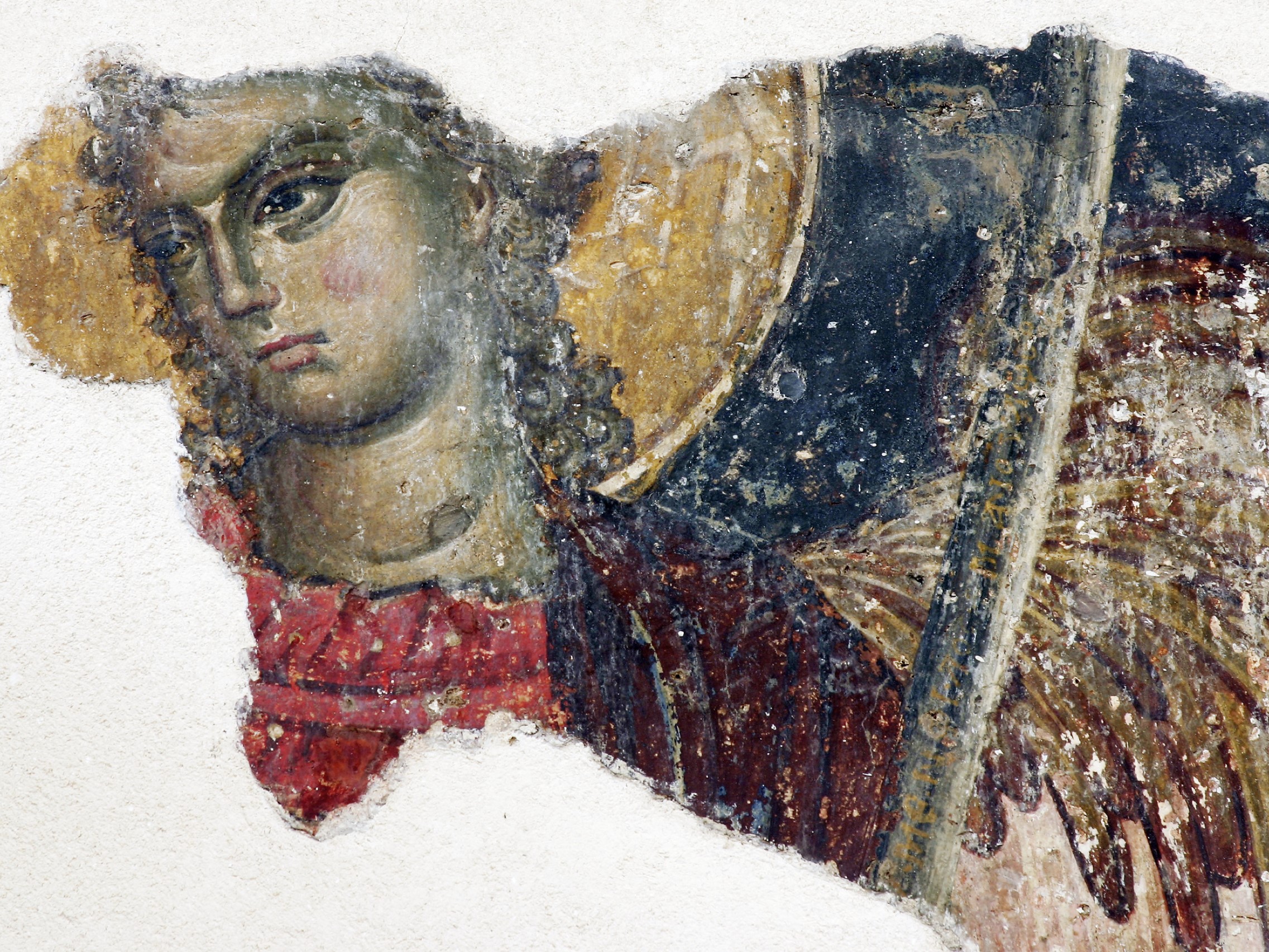Where the East met the West
Painting in Boka Kotorska has a very long tradition. This is confirmed by the examples of artistic expression on the cave walls at Lipci, created in the prehistoric era. The floor mosaics in Risan, dating back to the 2nd century AD, with the image of Hypnos, God of Dreams, are considered the most beautiful examples of floor painting in this region
Fresco painting has also got a long tradition, but only fragments have been preserved in the churches of St. Tryphon, St. Luke, St. Mary Collegiate in Kotor. In St. Basil’s Church in Lower Stoliv, unique samples of wall paintings have been preserved, depicting the saints of both Western and Eastern Church, with the names of the authors written in the alphabet used by the respective church.
The last representatives of the byzantine tradition in this area are found among the icon painters from the family Dimitrijević-Rafailović from Risan.
Famous domestic icon painters are: Todor Vuković, whose activity is linked to the 16th century, and Maksim Tujković from Grbalj, who was painting icons in the 18th century.
Best known among them is Dimitrije Rafailović, known as the author of the fresco paintings in the churches of St. Nicholas in Pelinovo and St. George in Šišići – Grbalj, at the end of the 17th century and the first decades of the 18th century. The best icon works of this family are found in the church of St. Luke and in the annexed Chapel of St. Spyridon.
The most famous representative of Kotor School of painting is Lovro Marinov Dobričević (1420–1478). Most of his works have been preserved in the churches of Dubrovnik. In Kotor region, his most significant work of art is Our Lady of the Rock, made around 1452, and preserved on the altar of the church with the same name.
The influence of the Venetians gradually overpowered the domestic artists and consequently, in the region of Boka Kotorska, there were more and more works of Italian painters, sculptors and architects, many of which being the masterpieces of the Renaissance and Baroque era.
Although under the influence of the Venetian school of painting, during Baroque era, Tripo Kokolja (1661–1713) from Perast, successor of the domestic painting tradition, made the paintings for the walls and ceiling of the Church of Our Lady of the Rock, with the altar painting in the same church being the work of Lovro Dobričević.
Like many other coastal towns, Kotor had a well-developed literary life. Golden Era of Kotor poetry belongs to the 16th century. Those who excelled at their works were: Ljudevit Paskvalić, whose poems ensured him a very high position in the Italian literature, then Ivan Bona Boliris, Bernard Pima and others. Contrary to their predecessors, Kotor writers of the 17th century, write in vernacular. In the 18th century, patriotic and love poetry surfaced, with Ivan Nenadić being the most prominent representative.
Literary work in the 19th century is mostly reduced to collecting and processing folk literature, like the collector’s work of Vuk Stefanović Karadžić, as well as of his collaborators in this field, Vuk Popović (1806–1876) and Vuk Vrčević (1811–1882), both from Risan.
At the end of the 19th century, Srećko Vulović from Perast and Pavo Kamenarović iz Dobrota, the author of the verses for the Boka Navy dance, excel at their works. The successors of the tradition related to the studying of Boka Kotorska, Kotor in particular, during the 20th century are the following: don Niko Luković, Miloš Milošević PhD, Maksim and Ignjatije Zloković, Slavko Mijušković PhD, Risto Kovijanić, don Gracija Brajković, don Pavao Butorac, don Ivo Stjepčević, don Anton Milošević, don Srećko Vulović, Predrag Kovačević from the field of history, Vasko Lipovac creating his works of art, Rajko Vujičić, in the field of art history.



